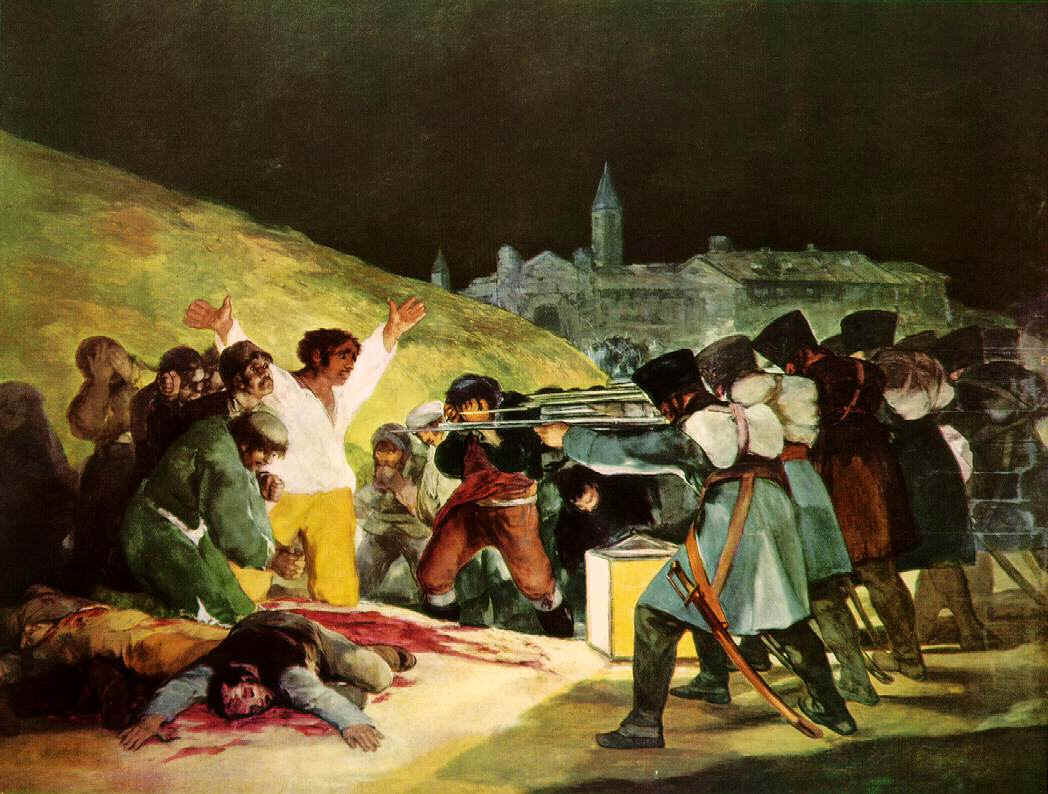
Yes, I've posted this before -- an intense and tragic evocation of the State as killer. Artist Michael Newberry describes the powerfully condensed piece, contrasting it with Delacroix's Liberty Leading the People in which the figures are far from the "the playthings of destiny" they are here, instead "they are acting to fulfil their aims." The chief difference between the two hinges on the issue of volition, he says, and the painter's view of it.
On the other side of this volitional issue [to Delacroix's depiction] we have Goya's painting of an execution, in which the these poor men have been lead like sheep to their slaughter. Notice that in the background that the State buildings are above the scene, the implication is that the state dictates to the humans below. There is a line of faceless universal soldiers, heads bowed, carrying out their orders. The main victim thrusts his arms out in the gesture of "why". Notice how the light box is turned towards the victims, they are bathed in its sympathetic glow while the soldiers are in the shadow. Also notice that the color of the light box and the main character is identical gold and white, the implication being that he is the light. Goya paints an empathic portrait of these victims plight but victims they are; hopeless playthings of the mysterious State lurking in the background.
2 comments:
I always thought the executioners in the Goya painting were French fusiliers. There was an uprising against the French in the streets of Madrid and the firing squads were part of their "restoration" of order. The uprising was against the French and the puppet regime Napoleon set up after forcing King Charles IV to abdicate and replaced him with his son, the francophile, Ferdinand. The buildings on the background were probably put there to give viewers a geographical reference.
I prefered Goya's "Charge of the Maemelukes" and the painting "The Defence of the Madrid Artillery Park, 2nd May" by ..can't remember the painter.
Brian Smaller
My interpretation of this painting:
The man holding up his hands in a gesture of surrender and submission.
The others have been taken from the church in the background.
The soldier holding the musket is also wearing a crescent sabre, the symbol of Islam.
There appears to be felled tree stumps on the hillside and the surrounding area is barren.
Nothing exists but death. All signs of life have been removed. No random leaf on the ground, not even a small tussock of wiry grass.
The fact that this ground was/has been prepared for battle indicates that it was for a hugely momentous conflict.
The man who submits will survive but might as well be dead. He will always be surrounded by death.
There are no celestial objects in the sky.
There are no signs of hope because there is none.
The battle has been lost.
Post a Comment